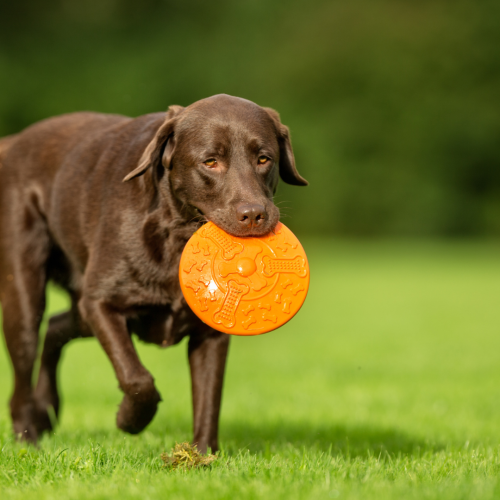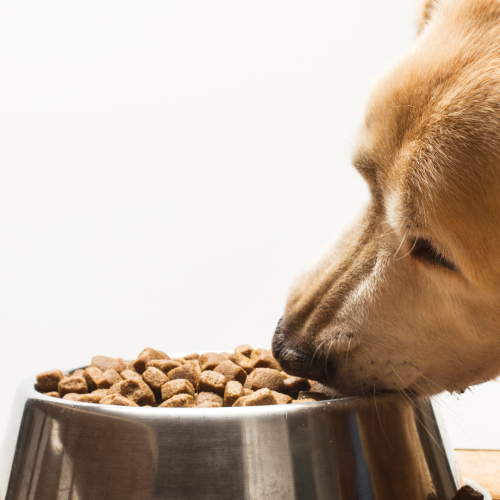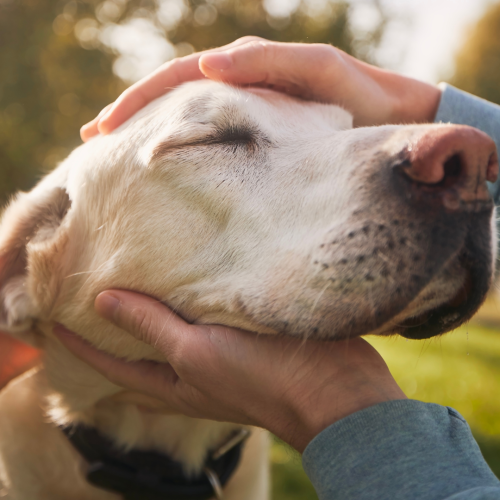The Labrador Newfoundland mix, often affectionately called the “Newfador,” combines the best traits of its parent breeds—the Labrador Retriever and the Newfoundland. Known for their large size, gentle disposition, and loving nature, these dogs are excellent companions for families and active individuals. However, owning a Newfador has unique responsibilities, particularly regarding their health, diet, and exercise needs.
These dogs are not just big; they have big needs that require careful attention to ensure they live a healthy and fulfilling life. This blog post aims to guide you through the essentials of caring for your Labrador Newfoundland mix, covering everything from the common health issues that may affect this breed to the dietary habits best suited to their needs and the types of exercise that will keep them healthy without straining their large bodies.
Whether you are a new owner of a cuddly Newfador puppy or looking to better care for your mature mix, understanding these aspects is crucial. Join us as we explore comprehensive and practical tips to help you manage your beloved Labrador Newfoundland mix’s health, diet, and activity level, ensuring they thrive in your care.
Table of Contents
Common Health Problems in Labrador Newfoundland Mix

When caring for a Labrador Newfoundland mix, understanding and managing their health is paramount. This majestic breed blend inherits not only the physical traits of its parent breeds—the Labrador Retriever and the Newfoundland—but also their potential health challenges. Common issues such as hip and elbow dysplasia, heart conditions, and certain hereditary diseases are prevalent, necessitating vigilant health care and regular veterinary check-ups.
This section on Health Care Essentials will delve into the specific health concerns associated with the Labrador-Newfoundland mix, offering insights into preventative measures that can mitigate these risks. We’ll discuss the importance of early diagnosis and continuous monitoring to maintain your pet’s health, alongside practical advice on vaccinations, parasite control, and other routine care practices. By adhering to these guidelines, you can help ensure a healthier, happier life for your gentle giant, allowing them to thrive in your care.
The Labrador Newfoundland mix, a blend of two large breeds known for their generous nature and robust size, is susceptible to several health issues, particularly those with a genetic basis. Understanding these common health concerns can help you take proactive steps to manage or prevent them, ensuring a healthier life for your beloved pet. Here are the key health issues often seen in Labrador Newfoundland mixes:
1 Joint Problems
Hip Dysplasia: This condition, where the hip joint fails to develop correctly, is common in larger dogs and can lead to arthritis or lameness. Hip dysplasia is influenced by genetics, diet, and rapid weight gain during puppyhood.
Elbow Dysplasia: Similar to hip dysplasia, this is a developmental abnormality in the elbow joint that can cause pain and limp. It is often seen in fast-growing large breed dogs.
2. Heart Conditions
– Subvalvular Aortic Stenosis (SAS): This is a common congenital heart defect in large breeds, including Newfoundlands, where there is a narrowing below the aortic valve in the heart. This can lead to reduced blood flow and increased heart work, potentially causing serious complications.
– Dilated Cardiomyopathy (DCM): More common in older dogs, DCM involves the enlargement and weakening of the heart muscle, leading to decreased heart function and possibly heart failure.
3. Obesity
Obesity is a significant health concern for Labrador Newfoundland mixes because both parent breeds are prone to weight gain. Excessive weight can exacerbate joint issues, lead to diabetes, and cause other metabolic and physical health problems.
4. Diabetes
Diabetes mellitus can develop in dogs that are overweight or have improper diets, though it’s less commonly reported specifically in Newfoundlands or Labradors. Symptoms include excessive thirst, increased urination, weight loss, and lethargy.
5. Eye Problems
– Cataracts: Cloudiness in the lens of the eye that can progress to blindness. While cataracts can be inherited, they can also develop due to diseases like diabetes.
Progressive Retinal Atrophy (PRA): A degenerative disease affecting the retina, which can gradually lead to blindness. PRA is inherited and shared in many dog breeds, including Labradors.
6. Cancer
Both Labradors and Newfoundlands have a predisposition to certain types of cancers. Common types include lymphoma and hemangiosarcoma. Regular check-ups can aid in early detection and treatment.
7. Bloat (Gastric Dilatation-Volvulus)
This is an emergency condition that involves the stomach swelling with gas and sometimes twisting on itself, which can be life-threatening. Large breeds with deep chests, like the Newfoundland, are particularly at risk.
By being aware of these potential health issues and actively engaging in preventative health care, Labrador Newfoundland mixers’ owners can significantly impact their pets’ overall health and longevity. Regular consultations with a veterinarian will further tailor a health plan that suits your pet’s specific needs.
Tips To Prevent Common Diseases in Labrador Newfoundland Mix

Preventing common diseases in a Labrador Newfoundland mix involves a combination of good care practices, awareness, and preventive measures that target the breed’s specific health predispositions. Here are detailed tips for each major health issue you might encounter:
1. Joint Problems (Hip and Elbow Dysplasia)
– Weight Management: Keep your dog at a healthy weight to minimize the stress on its joints.
– Proper Nutrition: Ensure that your dog’s diet includes the right balance of nutrients. Diets formulated for large breed puppies can promote proper bone development and prevent excessive growth.
– Controlled Exercise: Avoid high-impact activities, especially with puppies. Opt for exercises like swimming or walking, which are easier on the joints.
– Supplements: Consult your veterinarian about supplements like glucosamine and chondroitin, which may help maintain healthy cartilage.
2. Heart Conditions (SAS, DCM)
– Regular Veterinary Screenings: Early detection through regular heart screenings, such as echocardiograms, can help manage heart conditions effectively.
– Proper Exercise: While exercise is important, it should be appropriate for your dog’s health condition. Dogs with heart issues may require moderated exercise.
– Diet Management: Special diets may be recommended for dogs with heart conditions, often lower in sodium and balanced to support cardiac function.
3. Obesity
– Calorie Control: Feed your dog a balanced diet without overfeeding. Pay attention to the calorie counts and follow feeding guidelines based on your dog’s age, size, and activity level.
– Regular Exercise: Daily exercise is crucial to keep your dog fit and prevent weight gain. Tailor the intensity and duration to your dog’s health and physical capability.
– Regular Check-ups: Regular vet visits can help monitor your dog’s weight and adjust diet and exercise as needed.
4. Diabetes
– Diet Control: Feed a high-protein, low-fat diet that is fiber-enriched to help manage blood sugar levels.
– Weight Management: Obesity is a significant risk factor for diabetes, so maintaining a healthy weight is essential.
– Regular Veterinary Check-ups: Monitoring for symptoms of diabetes and other health issues can lead to early detection and treatment.
5. Eye Problems (Cataracts, PRA)
– Regular Eye Exams: Early detection through regular check-ups can help manage these conditions effectively.
– Genetic Testing: Genetic testing can inform you if your dog is at risk for inherited conditions like PRA.
– Protect Their Eyes: Keep your dog’s eyes clean and protected from harsh light or debris.
6. Cancer
– Regular Health Checks: Early detection through regular veterinary examinations can significantly improve outcomes.
– Healthy Lifestyle: A balanced diet rich in antioxidants and proper exercise can help support overall health and potentially reduce the risk of cancer.
– Avoid Carcinogens: Reduce your dog’s exposure to environmental toxins such as smoke, lawn chemicals, and harmful household cleaners.
7. Bloat (Gastric Dilatation-Volvulus)
– Feed Smaller, More Frequent Meals: Feeding smaller amounts more frequently can help reduce the risk.
– Avoid Rigorous Exercise Around Feeding Times: Prevent exercise immediately before and after meals.
– Elevated Feeding: Some veterinarians recommend elevated feeding dishes for large breeds, though the efficacy of this is debated. Consult your vet for personalized advice.
Implementing these preventive measures can significantly enhance the health and longevity of your Labrador Newfoundland mix. Regular consultations with your veterinarian will enable tailored preventive care suited to your dog’s needs, ensuring a happy, healthier life.
Tips for Routine Care of Labrador Newfoundland Mix

Providing routine care for your Labrador Newfoundland mix is essential to their health and well-being. Here are expanded details on each aspect of routine care for these gentle giants:
1. Regular Veterinary Check-ups
– Annual Exams: Schedule annual veterinary check-ups to keep up with vaccinations, assess health status, and catch any emerging health issues early. For senior dogs or those with health problems, bi-annual visits might be necessary.
– Dental Checks: Include dental health in your regular vet visits. Dental disease can lead to significant health issues, so regular teeth cleaning and checks are crucial.
2. Vaccinations
– Puppy Vaccinations: Start vaccinations around 6 to 8 weeks of age, covering parvovirus, distemper, rabies, and hepatitis, among others. Follow the schedule advised by your vet.
– Booster Shots: Keep up with the necessary booster shots to maintain immunity. Adult dogs typically need a rabies booster every 1-3 years and other vaccinations every 1-3 years depending on the specific vaccine and local regulations.
3. Parasite Control
– Fleas and Ticks: Use monthly preventatives to keep fleas and ticks at bay. Check regularly for ticks, especially if your dog spends much time outdoors.
– Heartworm: Administer monthly heartworm preventatives as heartworm treatment can be difficult and costly. Mosquitoes transmit heartworm, so prevention is crucial.
– Intestinal Parasites: Regular deworming based on your veterinarian’s advice is essential, especially for puppies who are more vulnerable to worms.
4. Grooming
– Coat Care: Brush your dog’s coat several times weekly to reduce shedding and prevent matting. This breed mix can have a thick, water-resistant coat that requires regular maintenance.
– Bathing: Bathe your dog every 2-3 months or as needed. Over-bathing can strip their coat of natural oils, so it’s important to use a dog-specific shampoo.
– Nail Trimming: Trim nails regularly to prevent discomfort and problems with walking. If you can hear the nails clicking on the floor, they are too long.
– Ear Care: Check and clean their ears weekly, especially if they are floppy. This helps prevent ear infections, which can be expected in dogs with floppy ears.
5. Nutritional Management
– Balanced Diet: Feed a high-quality diet appropriate for their age, size, and activity level. Large breed-specific formulas can help maintain optimal bone and joint health.
– Feeding Schedule: Adult dogs typically do well with two meals daily. Avoid free feeding to prevent obesity.
– Hydration: Ensure they have access to fresh water at all times, especially after exercise and in hot weather.
6. Exercise and Mental Stimulation
– Regular Exercise: Provide daily exercise to keep your dog physically fit and mentally stimulated. Tailor the amount and intensity of exercise to your dog’s age and health.
– Mental Enrichment: Engage your dog in training and brain games to keep them mentally sharp. Puzzle toys, scent work, and new tricks can provide mental stimulation.
7. Socialization and Training
– Early Socialization: Expose your puppy to various people, animals, and environments early on to encourage good social skills.
– Continuous Training: Continue training throughout your dog’s life to reinforce positive behaviors and deepen your bond.
Implementing these routine care tips will help ensure your Labrador Newfoundland mix stays healthy, happy, and well-adjusted throughout their life. Regular check-ins with your veterinarian and a proactive approach to health and care can make a significant difference in the quality of life for your furry friend.
Nutritional Needs of Labrador Newfoundland Mix

The Labrador Newfoundland mix is a large breed with specific dietary requirements that must be carefully managed to ensure overall health and longevity. Proper nutrition supports day-to-day activities and contributes to the long-term wellness of various organs and body systems.
Dietary Requirements
– Caloric Intake: Given their size and typically moderate activity levels, Labrador Newfoundland mixes require significant calories. However, these should be carefully balanced to avoid obesity, especially if the dog is less active. An average adult Labrador Newfoundland mix might need anywhere from 1500 to 2500 calories per day depending on their activity level and age.
– Protein and Fat: High-quality protein is crucial for muscle maintenance and overall growth. Diets should contain about 18-25% protein and 12-15% fat for adults; puppies require slightly more protein (22-28%) to support their growth.
– Carbohydrates: While dogs do not have a strict carbohydrate requirement, good quality sources like whole grains, vegetables, and some fruits can provide energy as well as fiber, which aids in digestion.
Nutrition for Different Organs and Body Parts
– Joints: Omega-3 fatty acids (EPA and DHA), found in fish oils, are beneficial for maintaining joint health and can help reduce inflammation. Glucosamine and chondroitin supplements can also support joint health, particularly important in this large breed prone to hip and elbow dysplasia.
– Heart: Taurine and L-carnitine are important for heart health and are often added to commercial dog foods. These nutrients support cardiac function and energy production.
– Skin and Coat: Balanced Omega-6 and Omega-3 fatty acids are essential for maintaining a healthy skin and shiny coat. Flaxseed and fish oil are excellent sources.
– Digestive System: Probiotics and fiber help maintain a healthy digestive system. Foods like pumpkin or beet pulp can aid in digestion and stool quality.
Commercial Diets
There are numerous commercial dog foods available in the U.S. market that are formulated to meet the needs of large breed dogs like the Labrador Newfoundland mix:
– Royal Canin Size Health Nutrition Large: Specifically designed for large breeds, this food supports bone and joint health and maintains energy levels.
– Hill’s Science Diet Large Breed: Provides an optimal balance of nutrients for muscle maintenance and joint health.
– Purina Pro Plan Large Breed: A protein-rich formula designed to maintain muscle mass and joint health.
Homemade Food
Some owners prefer to cook for their dogs. Homemade meals can be tailored but should always be discussed with a vet to ensure they meet all nutritional needs. A balanced homemade meal might include:
– Protein sources: Cooked lean meats like chicken, turkey, or beef.
– Carbohydrates: Brown rice, barley, or sweet potato.
– Vegetables: Carrots, peas, and green beans.
– Supplements: Depending on the dog’s specific needs, additions might include calcium, fish oil, or vitamin E.
Foods That Should Be Avoided
Certain foods can be harmful or even toxic to dogs and should always be avoided:
– Chocolate: Contains theobromine, which is toxic to dogs.
– Grapes and Raisins: Can cause kidney failure in dogs.
– Onions and Garlic: Can lead to anemia by destroying red blood cells.
– Xylitol: This artificial sweetener found in gum, candy, and some peanut butter can cause a rapid insulin release, which can lead to liver failure.
– Alcohol and Caffeine: Can be very toxic and potentially fatal.
– High-Fat Foods: Can cause pancreatitis, a painful and potentially dangerous inflammation of the pancreas.
Ensuring your Labrador Newfoundland mix has a balanced diet tailored to their specific needs can help manage weight, maintain joint health, support cardiac function, and enhance overall vitality. Regular consultations with a veterinarian can also provide guidance tailored to your dog’s health requirements.
Recommended Exercise and Physical Activity for Labrador Newfoundland Mix
Labrador Newfoundland mixes, given their size and lineage, require well-planned exercise routines to maintain their health, prevent obesity, and manage energy levels. These dogs benefit greatly from a balanced approach to physical activity that respects their joint health while providing adequate mental stimulation and physical exertion.
Understanding Exercise Needs
– Duration and Intensity: Adult Labrador Newfoundland mixes generally need around 60 to 90 minutes of exercise per day, split into two sessions to avoid fatigue. Puppies and senior dogs will have different requirements; puppies should have shorter, more frequent sessions to avoid stressing developing joints, and seniors need gentle exercise to maintain mobility without overexertion.
– Type of Activities: The activities chosen should not only cater to their physical needs but also to their mental health. Activities should be varied to keep them engaged and to work different muscle groups.
Suitable Exercises
– Walking and Hiking: Regular walks are essential, not only for exercise but also for sensory stimulation. Walking on different terrains can help strengthen their muscles and joints. Hiking on gentle trails is also a great way for them to explore and engage with nature, provided the trails are not too steep or rough.
– Swimming: This is an excellent form of exercise for this mix, particularly because both Labrador Retrievers and Newfoundlands are known for their swimming abilities. Swimming is low-impact, which makes it ideal for supporting joint health while also providing good cardiovascular exercise.
– Fetch and Tug-of-War: These games are great for physical activity and for strengthening the bond between dog and owner. They also provide mental stimulation and can be played in a controlled manner that manages exertion levels.
– Agility Training: For more active individuals, agility training can be a rewarding activity. It not only exercises the body but also stimulates the mind. This should be done considering the dog’s health and physical capability, as agility can be demanding.
Training Considerations
– Start Slowly: Gradually increase the intensity and duration of exercise to build your dog’s endurance and physical capabilities without risking injury.
– Watch for Overexertion: Labrador Newfoundland mixes can be prone to overheating and exhaustion, especially in warm weather. Always watch for signs of fatigue or overheating, such as excessive panting, drooling, or lethargy.
– Regular Breaks: Incorporate breaks during exercise sessions to allow them to catch their breath and hydrate, especially on hotter days or during more intense activities.
Exercise in Different Life Stages
– Puppies: Focus on short, frequent play sessions that allow the puppy to expend energy without putting undue stress on developing bones and joints. Avoid forced running and jumping.
– Adults: Maintain a routine that includes walking, swimming, and interactive play that matches their energy level.
– Seniors: Adjust exercises to accommodate decreasing stamina and potential joint issues. Activities like gentle walking and light swimming can help maintain mobility and quality of life.
Mental Stimulation
– Training Sessions: Regular training sessions help keep their mind sharp and allow them to learn new commands and tricks, which can be mentally stimulating.
– Puzzle Toys: These toys can be used during playtime to encourage problem-solving.
– Socialization: Interacting with other dogs in controlled settings, like dog parks, can provide social and mental stimulation.
Regular, tailored physical activity and mental stimulation are crucial for the health and happiness of a Labrador Newfoundland mix. These activities help manage weight, improve cardiovascular health, strengthen muscles and joints, and reduce the risk of behavioral problems associated with boredom and excess energy. Always align exercise routines with the advice of a veterinarian, primarily to accommodate any health concerns or limitations your dog may have.
Special Considerations and Tips For Growing Puppies
Raising a Labrador Newfoundland mix puppy involves some special considerations to ensure they grow into healthy, well-adjusted adults. Due to their large size and mixed breed characteristics, these puppies require careful attention to their diet, exercise, socialization, and training from an early age.
1. Nutritional Needs
– Appropriate Diet: Feeding a diet formulated for large breed puppies is crucial. These diets help regulate growth to prevent developmental bone and joint problems by ensuring proper ratios of calcium and phosphorus. Rapid growth can lead to issues like hip dysplasia, particularly prevalent in large breeds.
– Feeding Schedule: It’s recommended to divide their daily food intake into 3-4 smaller meals to support steady growth and maintain consistent energy levels throughout the day.
2. Exercise Requirements
– Controlled Exercise: While puppies are energetic and playful, their exercise should not be too strenuous or prolonged to avoid damaging their developing joints and bones. Activities should be short and spread throughout the day rather than long, intense sessions.
– Appropriate Activities: Encourage exercises that allow the puppy to set their pace, like free play in a secured area. Avoid forcing them to run or jump excessively, and steer clear of hard surfaces to reduce impact on their joints.
3. Socialization and Training
– Early Socialization: Expose your Labrador Newfoundland mix puppy to a variety of people, environments, sounds, and other animals early on. Proper socialization in the first few months can significantly impact their ability to handle new situations confidently as adults.
– Positive Reinforcement Training: Begin basic obedience training early using positive reinforcement techniques. Focus on simple commands like ‘sit’, ‘stay’, ‘come’, and proper leash behavior. Consistency and patience are key in training, especially with large breeds that can grow to be very strong.
4. Health Monitoring
– Regular Veterinary Check-ups: Puppies require several rounds of vaccinations and regular check-ups to monitor their growth and development. These visits are also opportunities to discuss spaying or neutering, which should be considered based on your veterinarian’s advice regarding the optimal time for these procedures, especially considering the large size of the breed.
– Watch for Early Signs of Disease: Be vigilant about signs of joint issues, digestive problems, or any unusual changes in behavior that might indicate health issues. Early intervention can prevent or lessen future complications.
5. Mental Development
– Chewing and Teething: Provide appropriate chew toys to help with teething. Chewing also helps keep them engaged and can prevent destructive behavior.
– Mental Stimulation: Use puzzle toys and practice training exercises to keep their minds active. Teaching tricks and playing interactive games can help develop their cognitive abilities.
6. Environmental Adjustments
– Safe Spaces: Create a safe and comfortable environment where the puppy can rest undisturbed. Consider using crates or special puppy zones that are securely fenced.
– Routine Establishment: Developing a consistent routine for feeding, potty breaks, playtime, and sleep can help your puppy feel secure and aid in quicker house training.
Special considerations for raising Labrador Newfoundland mix puppies are vital for their development into physically healthy and well-mannered dogs. Attention to these details will ensure your puppy has the best start in life, paving the way for a joyful and harmonious relationship as they grow into a cherished member of your family.
Special Considerations and Tips for Senior Dog Care
Caring for a senior Labrador Newfoundland mix involves adapting their routine to accommodate the changes that come with aging. These dogs may face new health challenges and have different requirements to ensure they remain comfortable and happy in their later years. Here’s how you can support your aging Labrador Newfoundland mix:
1. Dietary Adjustments
– Specialized Senior Diet: As metabolism slows with age, senior dogs may need fewer calories but still require a nutrient-rich diet. Foods formulated for senior dogs typically have lower calorie content but are high in fiber and essential nutrients to support digestive health and manage weight.
– Supplements: Consider adding supplements such as glucosamine and chondroitin for joint health, and omega fatty acids for cognitive function and coat health. Always consult with a vet before starting any new supplements.
2. Modified Exercise Routine
– Gentle Exercise: Reduce the intensity and duration of exercise to suit your senior dog’s stamina and joint health. Short, gentle walks are beneficial, and swimming can be an excellent low-impact activity if your dog enjoys water.
– Regular Movement: Encourage regular movement throughout the day to help maintain muscle tone and joint mobility, but be mindful to avoid overexertion.
3. Veterinary Care
– Regular Check-ups: Increase the frequency of veterinary visits to at least bi-annually for senior dogs to monitor their overall health and manage any age-related conditions.
– Health Screenings: Regular screenings for heart health, kidney function, and other organ systems can help catch and manage potential issues early.
4. Pain Management
– Observation for Pain or Discomfort: Watch for signs of discomfort, such as reluctance to move, changes in gait, or difficulty in lying down or standing up. Pain management is crucial in maintaining quality of life for senior dogs.
– Veterinary Interventions: Discuss pain management strategies with your veterinarian, which may include medications, physical therapy, or alternative treatments like acupuncture.
5. Mental Health
– Cognitive Function: Keep their mind active with gentle training exercises, puzzles, and games to combat signs of cognitive decline.
– Social Interaction: Continue to provide social interactions with humans and other pets, tailored to their comfort level, as social engagement can help maintain mental wellness.
6. Home Environment Modifications
– Accessibility: Make necessary adjustments to your home to help your senior dog navigate easily. Consider ramps if your dog struggles with stairs, and ensure their bed and food are easily accessible.
– Comfortable Bedding: Invest in orthopedic dog beds to support arthritic joints and ensure they can rest comfortably without pain.
7. End-of-Life Considerations
– Quality of Life Assessments: Regularly assess your dog’s quality of life with the help of your veterinarian. Discuss end-of-life care and make decisions based on your dog’s comfort and dignity.
Caring for a senior Labrador Newfoundland mix requires understanding and compassion as their needs change. With the right adjustments to their diet, exercise, and living conditions, and by maintaining a close relationship with your veterinarian, you can help ensure your aging dog enjoys their golden years to the fullest.
Conclusion
In conclusion, caring for your Labrador Newfoundland mix requires a dedicated approach to their health, diet, and exercise. This unique breed blend brings together the gentle nature and physical robustness of both the Labrador Retriever and the Newfoundland, necessitating specific considerations to maintain their well-being. From understanding their nutritional needs and managing their exercise routines to ensuring they receive regular veterinary care and timely interventions for common health issues, each aspect is critical in ensuring they lead a happy and healthy life.
Adapting your care approach as your dog transitions through different life stages—from a playful, energetic puppy to a dignified, slower-paced senior—will help address their changing needs effectively. Providing a balanced diet tailored to their age and activity level, engaging them in appropriate physical activities, and keeping a vigilant eye on their health and comfort can greatly enhance their quality of life.
Remember, the joy and companionship a Labrador Newfoundland mix offers are well worth the effort invested in their care. By embracing the responsibilities of owning such a magnificent breed mix, you forge a deep, rewarding relationship that enriches both your lives. Regular consultations with a veterinarian and a commitment to proactive, loving care will ensure your furry friend enjoys the best possible health throughout their life.
Frequently Asked Questions
1. What is a Newfoundland and Labrador mix called?
A Newfoundland and Labrador mix is often referred to as a Newfador.
2. What is the temperament of a Newfoundland Lab?
The temperament of a Newfoundland Lab mix is generally friendly, gentle, and loyal, combining the Newfoundland’s calm nature with the Labrador’s sociable and energetic traits.
3. How much does a Lab Newfoundland mix weigh?
The weight of a Lab Newfoundland mix typically ranges from 70 to 150 pounds, depending on the dominant genes and other factors like diet and exercise.
4. How much does a Lab Newfoundland mix puppy cost in the US?
The cost of a Lab Newfoundland mix puppy in the US varies widely, typically between $800 and $1,500, depending on the breeder, location, and lineage of the puppy.









